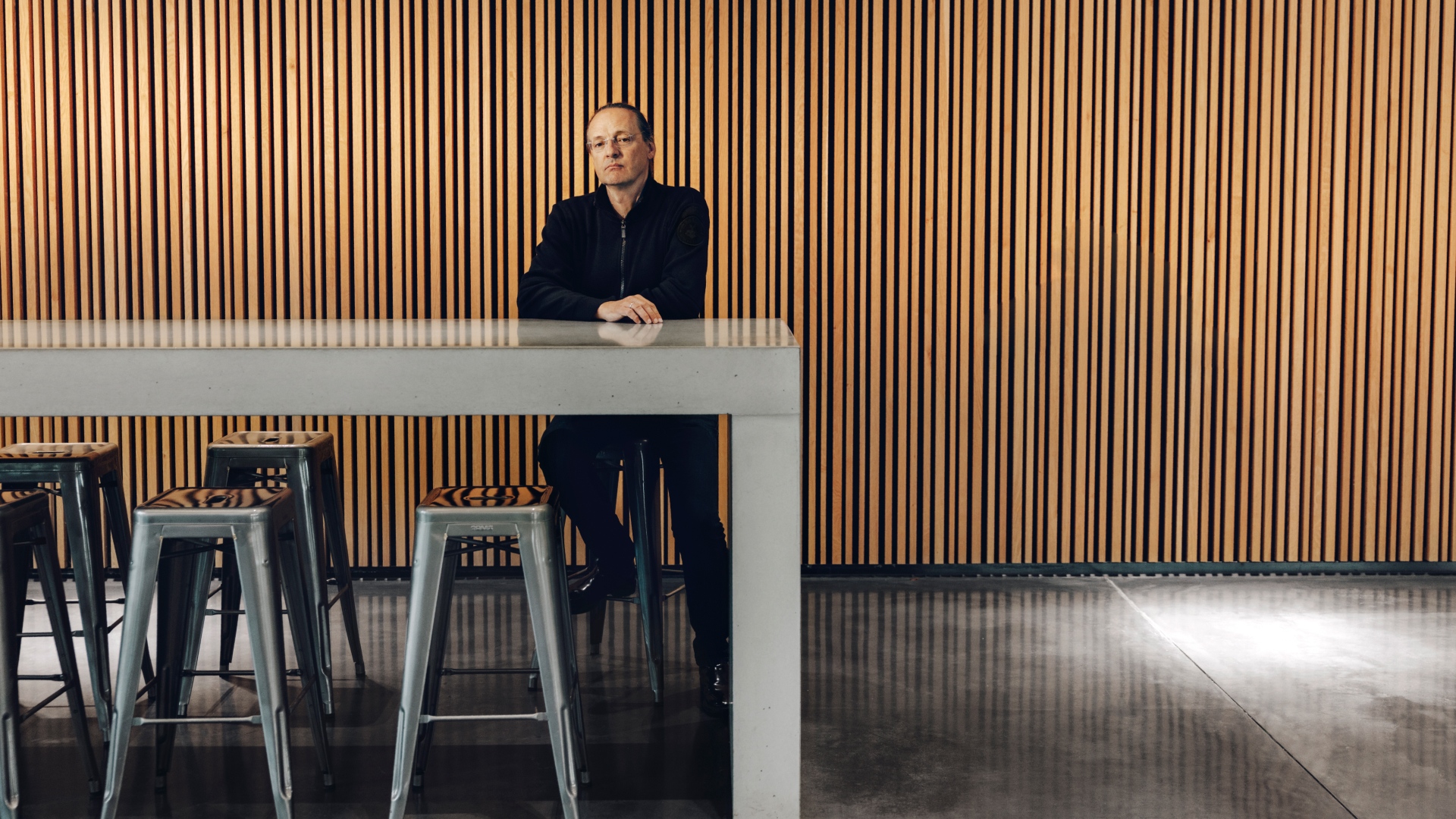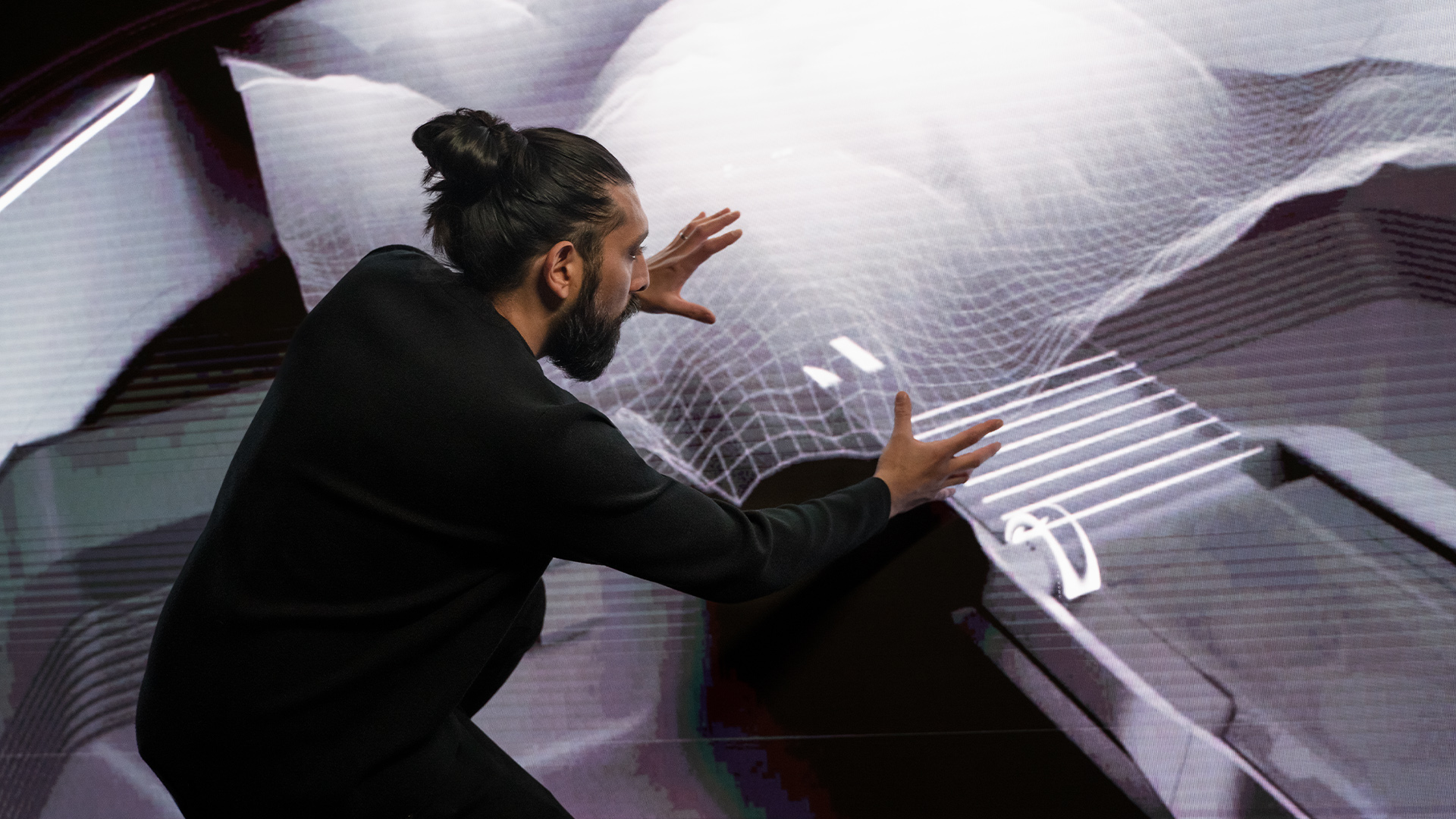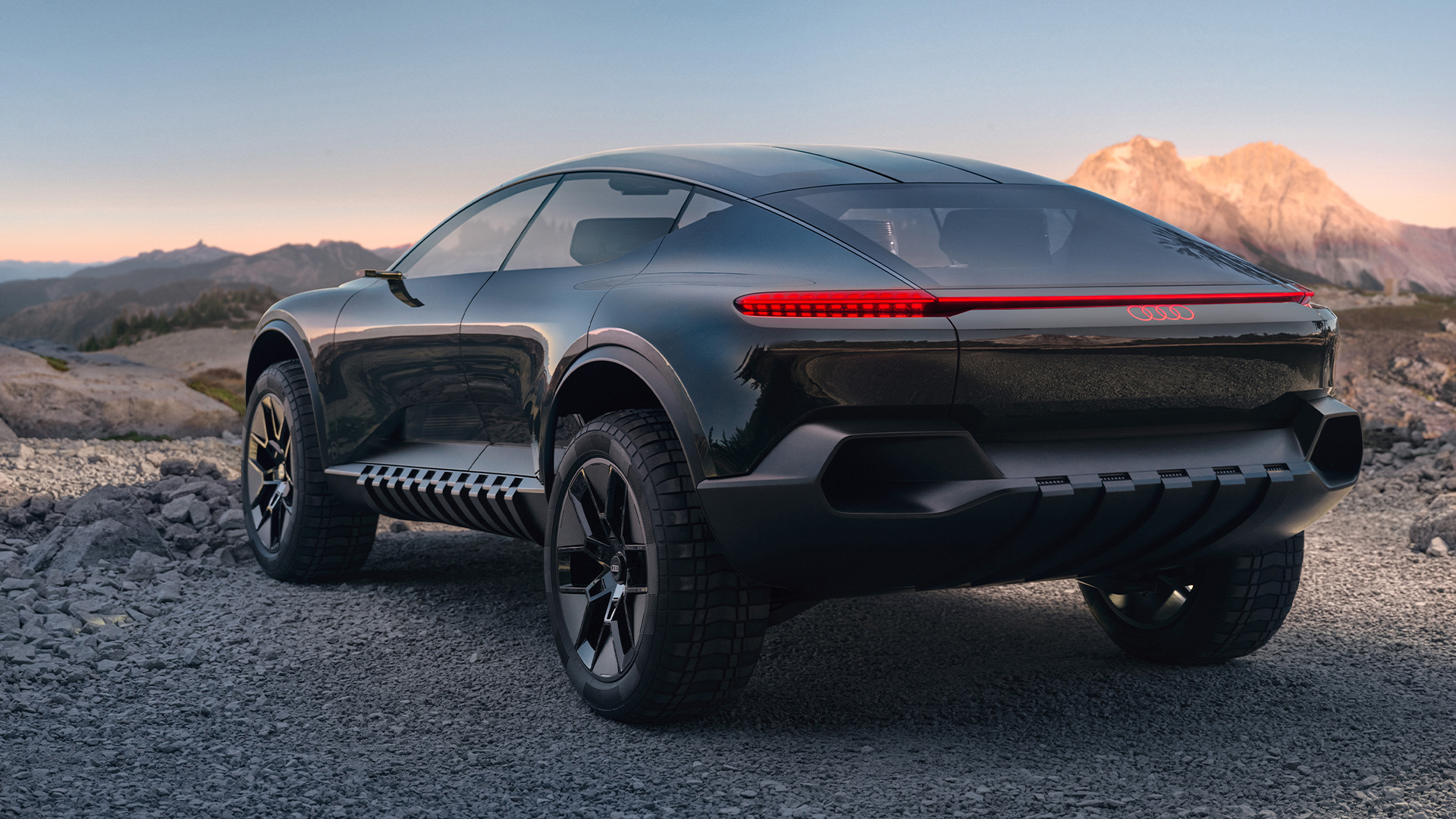Audi models give customers lots of freedom to personalise their cars. Learn more about the equipment that comes with the Audi RS e-tron GT* and which interior and exterior options are available on request.
Reinventing the wheel
Andreas Valencia Pollex is a wheel designer for Audi and is currently reinventing the wheel for electric vehicles—in terms of both design and aerodynamics.
RS e-tron GT:
Only consumption and emission values according to WLTP and not according to NEDC are available for the vehicle.

Aerodynamic plastic inserts give the Audi wheel designers new design options.
Aerodynamic plastic inserts give the Audi wheel designers new design options.
Mr.
Valencia Pollex, electromobility has brought special demands in terms of design
and aerodynamics. On the one hand, it allows new approaches to design. On the other hand,
wheels are getting bigger because they have to carry more weight. However,
large wheels present challenges in terms of aerodynamics. As an Audi designer,
how do you manage this balancing act?
First and foremost, a wheel is a
safety-relevant component. All the forces generated by a car are transferred to
the road via the wheel/tyre configuration. Yet unlike a chassis component, the
wheel is visible to the outside. We wheel designers are thus creating something
that has to meet the technical requirements while at the same time satisfying
design aspects. The energy balance of an electric vehicle is crucial so the
focus has shifted accordingly. Previously, wheels really only had to deliver on
strength requirements. Today, we are developing and designing intelligent aero
wheels with maximum possible efficiency. After all, this has a big impact on
the range of an electric vehicle.
What is it
that makes an ideal aero wheel?
The perfect interaction of vehicle body, tyre
and alloy wheel—and the position of the wheel in the wheel housing. To ensure
perfect aerodynamics, we need to achieve a certain flatness so that the air
hitting the front of the car is diverted around the vehicle body without
causing strong turbulence along the sides. The paradox here is that creating
flatness on a wheel always involves quite a lot of work. A closed surface means
using more material and, in the case of aluminium, that results in a certain
weight increase. That’s why we have used plastic to create the closed surfaces
on the wheels for the Audi e-tron GT quattro*. This keeps the wheel weight down.
Another factor is that, like anywhere in the energy equation, speed plays a
major role. Areas that move fast have a greater impact on aerodynamics than
slower-moving areas. This means the center of the wheel can be ignored. But
there’s a lot of aerodynamic leverage to be gained on the outer areas of an
aero wheel. In short, it’s very complex.

Andreas Valencia Pollex designs the new aero wheels for the Audi e-tron GT quattro*. His mission: to create a progressive design with optimum aerodynamics.

The pronounced twisting of the spokes runs counter to prevailing aesthetics.
Andreas Valencia Pollex designs the new aero wheels for the Audi e-tron GT quattro*. His mission: to create a progressive design with optimum aerodynamics.
The pronounced twisting of the spokes runs counter to prevailing aesthetics.
Why don’t you just put a flat cover on the wheel?
Our customers expect absolute functionality but also uncompromising aesthetics. On wheels, extreme flatness is not yet accepted as being beautiful. Our aim is to develop an aesthetic that conveys the innovation of electromobility while meeting our customers’ expectations.
Besides, from a purely technical viewpoint, it’s not possible to use entirely closed wheels. If the brakes are deprived of air, the brake fluid would eventually boil and cause a safety issue. A certain amount of ventilation is essential. In aerodynamic terms, we have nevertheless succeeded in balancing the geometry of this wheel for the Audi e-tron GT* so that it makes no difference whether the air sweeps across all the angles and openings or whether the surface is entirely closed.
Don’t the openings cause an air vortex?
No. Together with our aerodynamicists, we have found the exact sweet spot that lets air through to the brake while steering the airflow as if the surface were closed. At the speed at which it flows through the wheel, the air can only react as dictated by physics. In aerodynamic terms, the Audi e-tron GT quattro* wheel represents the absolute state of the art.

Some of the equipment depicted or described is optional and only available at an additional cost. The information covering standard and optional equipment on this website is specific to the German market. Detailed information on standard and optional equipment in your country is available from your national Audi website or from your Audi partner.
Some of the equipment depicted or described is optional and only available at an additional cost. The information covering standard and optional equipment on this website is specific to the German market. Detailed information on standard and optional equipment in your country is available from your national Audi website or from your Audi partner.
Is the frame of the aero wheel still made from aluminium? Is plastic only used for the cover components?
That’s right. If you look at the wheel from the inside, you’ll see five straight spokes which ensure maximum stability. Aluminium remains an essential material. Its technical properties, such as plasticity and strength, don’t change. Aluminium is also resistant to the tremendous heat generated by the brake on the inside of the wheel. Having said that, a classically designed five-spoke wheel would be virtually ineffective aerodynamically. During the development process, we found we could use plastic inserts to close the surface. This makes the wheel particularly light. The properties of the various plastics are very interesting in terms of identifying which plastic will withstand brake heat at which point on the wheel. It’s extremely time-consuming to design a lightweight wheel like this; it certainly doesn’t compare with creating an industrially produced aluminium wheel.

The frame of the Audi e-tron GT quattro aero wheel is a five-spoke rim made from aluminium for maximum stability.

The plastic inserts for the aero wheel have a texture that echoes the Four Rings’ e-vehicle design idiom.
Some of the equipment depicted or described is optional and only available at an additional cost. The information covering standard and optional equipment on this website is specific to the German market. Detailed information on standard and optional equipment in your country is available from your national Audi website or from your Audi partner.
The frame of the Audi e-tron GT quattro aero wheel is a five-spoke rim made from aluminium for maximum stability.
The plastic inserts for the aero wheel have a texture that echoes the Four Rings’ e-vehicle design idiom.
Some of the equipment depicted or described is optional and only available at an additional cost. The information covering standard and optional equipment on this website is specific to the German market. Detailed information on standard and optional equipment in your country is available from your national Audi website or from your Audi partner.
How did you approach designing this wheel?
The top priority was to achieve a progressive design. We started by sketching a wheel with a certain flatness to prevent major errors creeping in right from the outset. But the wheel’s final design was the result of perfect collaboration with colleagues in manufacturing, production and aerodynamics. One example is this key two-part plastic component that creates flatness and looks like a wing. The two parts are clipped together and then screwed to the wheel at a different geometry. We really wanted it to be a bicolor component. Initially, the light-colored part was made from aluminium but that turned out to be too heavy. So we had to use a plastic, which we precision-coated. We weren’t trying to recreate high-sheen aluminium. The intricate interplay of all disciplines is the only way to achieve the precision needed to create this component with the progressive design and durable construction that can withstand all driving conditions in any weather.
So plastic not only reduces weight but gives you more options as a designer?
Using plastic adds a new dimension. Previously when designing a wheel, I always had to take a certain edge radius into account for physical and construction reasons. If the edges are too sharp, forces will concentrate there. And that’s where an aluminium component will break. It’s different with plastic. Now I can create high-precision details like this texture—that just wasn’t possible before. And the “Colour and Trim” design team introduced us to coatings I’d never previously heard of. It is a whole new universe to us wheel designers.
“A whole new universe is opening up to us wheel designers.”
Andreas Valencia Pollex

Some of the equipment depicted or described is optional and only available at an additional cost. The information covering standard and optional equipment on this website is specific to the German market. Detailed information on standard and optional equipment in your country is available from your national Audi website or from your Audi partner.
Some of the equipment depicted or described is optional and only available at an additional cost. The information covering standard and optional equipment on this website is specific to the German market. Detailed information on standard and optional equipment in your country is available from your national Audi website or from your Audi partner.
Where is the Audi DNA in this wheel design?
Basically, the Audi DNA can be found in every part of the wheel. Each and every detail radiates design quality: the clarity, the precise choice of angles, the balance of the lines that come together in an arc. If you have an eye for design, you’ll appreciate this quality. And if you don’t know a whole lot about design, you’ll still find it soothing on the eye because everything about the wheel is appealing. That’s Audi DNA. That’s design quality. At the time we designed the wheel, the goal was to make the Audi e-tron GT quattro* look as progressive, electric, modern and sharp as possible. You’ll find all that in this wheel.

The complex, multicolored aero wheel for the Audi e-tron GT quattro*: The partial closure with plastic inserts achieves the same aerodynamic efficiency as if the surface were completely closed.

Aluminium is still an essential material for wheels: Its stability makes it resistant to brake heat.
Some of the equipment depicted or described is optional and only available at an additional cost. The information covering standard and optional equipment on this website is specific to the German market. Detailed information on standard and optional equipment in your country is available from your national Audi website or from your Audi partner.
The complex, multicolored aero wheel for the Audi e-tron GT quattro*: The partial closure with plastic inserts achieves the same aerodynamic efficiency as if the surface were completely closed.
Aluminium is still an essential material for wheels: Its stability makes it resistant to brake heat.
Some of the equipment depicted or described is optional and only available at an additional cost. The information covering standard and optional equipment on this website is specific to the German market. Detailed information on standard and optional equipment in your country is available from your national Audi website or from your Audi partner.




